Research
Research at the LEAR Lab explores learning from multiple perspectives to deepen our understanding of how students develop knowledge, competencies, and new ways of thinking. Our team works across diverse fields, including second language acquisition, data science, learning analytics, natural language processing, psycholinguistics, and more, contributing to a comprehensive view of the learning process.
All
2025
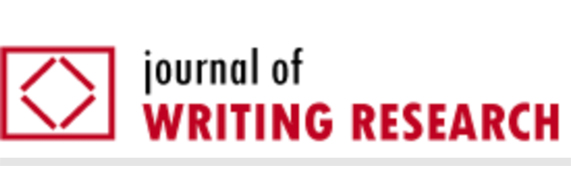
Distinguishing effective writing styles in the PERSUADE corpus
Journal of Writing Research
·
07 Oct 2025
·
doi:10.17239/jowr-2025.17.02.02

Exploratory Assessment of Learning in an Intelligent Text Framework: iTELL RCT
Proceedings of the Twelfth ACM Conference on Learning @ Scale
·
17 Jul 2025
·
doi:10.1145/3698205.3729548

A large-scale corpus for assessing source-based writing quality: ASAP 2.0
Assessing Writing
·
01 Jul 2025
·
doi:10.1016/j.asw.2025.100954

The KLiCKe corpus: Keystroke logging in compositions for knowledge evaluation
Journal of Writing Research
·
03 Jun 2025
·
doi:10.17239/jowr-2025.17.01.02

Assessing writing quality using crowdsourced non-expert comparative judgement ratings
Assessment in Education: Principles, Policy & Practice
·
02 Jan 2025
·
doi:10.1080/0969594X.2025.2467664
2024

Multilingual Age of Exposure 2.0
International Journal of Artificial Intelligence in Education
·
12 Dec 2024
·
doi:10.1007/s40593-023-00386-7
Developing Linguistic Constructs of Text Readability Using Natural Language Processing
Scientific Studies of Reading
·
03 Nov 2024
·
doi:10.1080/10888438.2024.2422365

Automated Scoring of Constructed Response Items in Math Assessment Using Large Language Models
International Journal of Artificial Intelligence in Education
·
18 Jul 2024
·
doi:10.1007/s40593-024-00418-w

Focus Time and Writing Performance in An Intelligent Textbook
Proceedings of the Educational Data Mining in Writing and Literacy Instruction Workshop(WLIEDM)
·
15 Jul 2024
·
[no id info]

Using Intelligent Texts in a Computer Science Classroom: Findings from an iTELL Deployment
Proceedings of 8th Educational Data Mining in Computer Science Education Workshop (CSEDM 2024) at the 17th International Conference on Educational Data Mining
·
14 Jul 2024
·
[no id info]

Relation of Linguistic Indicators to Civic Engagement in Special Education
Proceedings of the 17th International Conference on Educational Data Mining
·
14 Jul 2024
·
[no id info]

Automatic Question Generation and Constructed Response Scoring in Intelligent Texts
Workshop on Leveraging Large Language Models for Next Generation Educational Technologies at the 17th International Conference on Educational Data Mining
·
14 Jul 2024
·
[no id info]

Semantic Similarity of Teacher and Student Discourse Linked to Quality Ratings from Classroom Observations
International Educational Data Mining Society
·
12 Jul 2024
·
doi:10.5281/zenodo.12729954

The Cleaned Repository of Annotated Personally Identifiable Information
International Educational Data Mining Society
·
12 Jul 2024
·
doi:10.5281/zenodo.12729952

A large-scale corpus for assessing written argumentation: PERSUADE 2.0
Assessing Writing
·
01 Jul 2024
·
doi:10.1016/j.asw.2024.100865
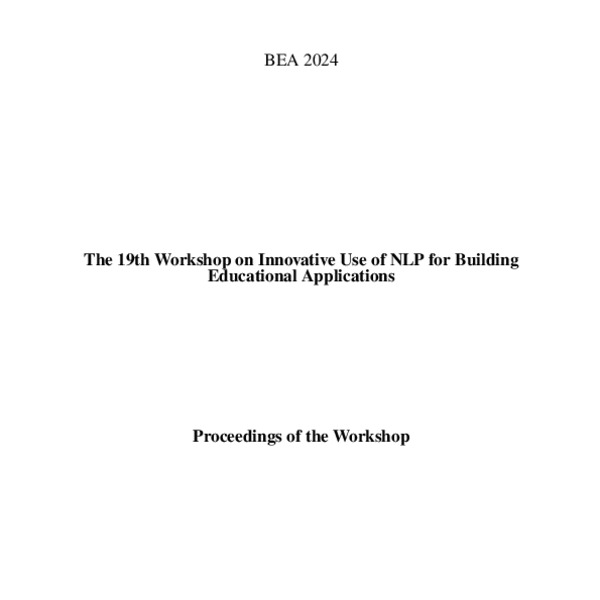
A World CLASSE Student Summary Corpus
Association for Computational Linguistics
·
15 Jun 2024
·
[no id info]

How AI Evaluates Learner Comprehension: A Comparison of Knowledge-Based and Large Language Model (LLM)-Based AI Approaches
Proceedings of the International Conference of the Learning Sciences
·
10 Jun 2024
·
doi:10.22318/icls2024.534046
Measuring Phonological Complexity Using the Perfect Rhymes Dictionary (PeRDict)
Reading Psychology
·
03 Jun 2024
·
doi:10.1080/02702711.2024.2359925

Formative Feedback on Student-Authored Summaries in Intelligent Textbooks Using Large Language Models
International Journal of Artificial Intelligence in Education
·
28 Mar 2024
·
doi:10.1007/s40593-024-00395-0

iScore: Visual Analytics for Interpreting How Language Models Automatically Score Summaries
Proceedings of the 29th International Conference on Intelligent User Interfaces
·
18 Mar 2024
·
doi:10.1145/3640543.3645142

Plagiarism Detection Using Keystroke Logs
Zenodo
·
01 Jan 2024
·
doi:10.5281/zenodo.11185779
2023

The English Language Learner Insight, Proficiency and Skills Evaluation (ELLIPSE) Corpus
International Journal of Learner Corpus Research
·
31 Dec 2023
·
doi:10.1075/ijlcr.22026.cro

The Tool for Automatic Measurement of Morphological Information (TAMMI)
Behavior Research Methods
·
29 Dec 2023
·
doi:10.3758/s13428-023-02324-w
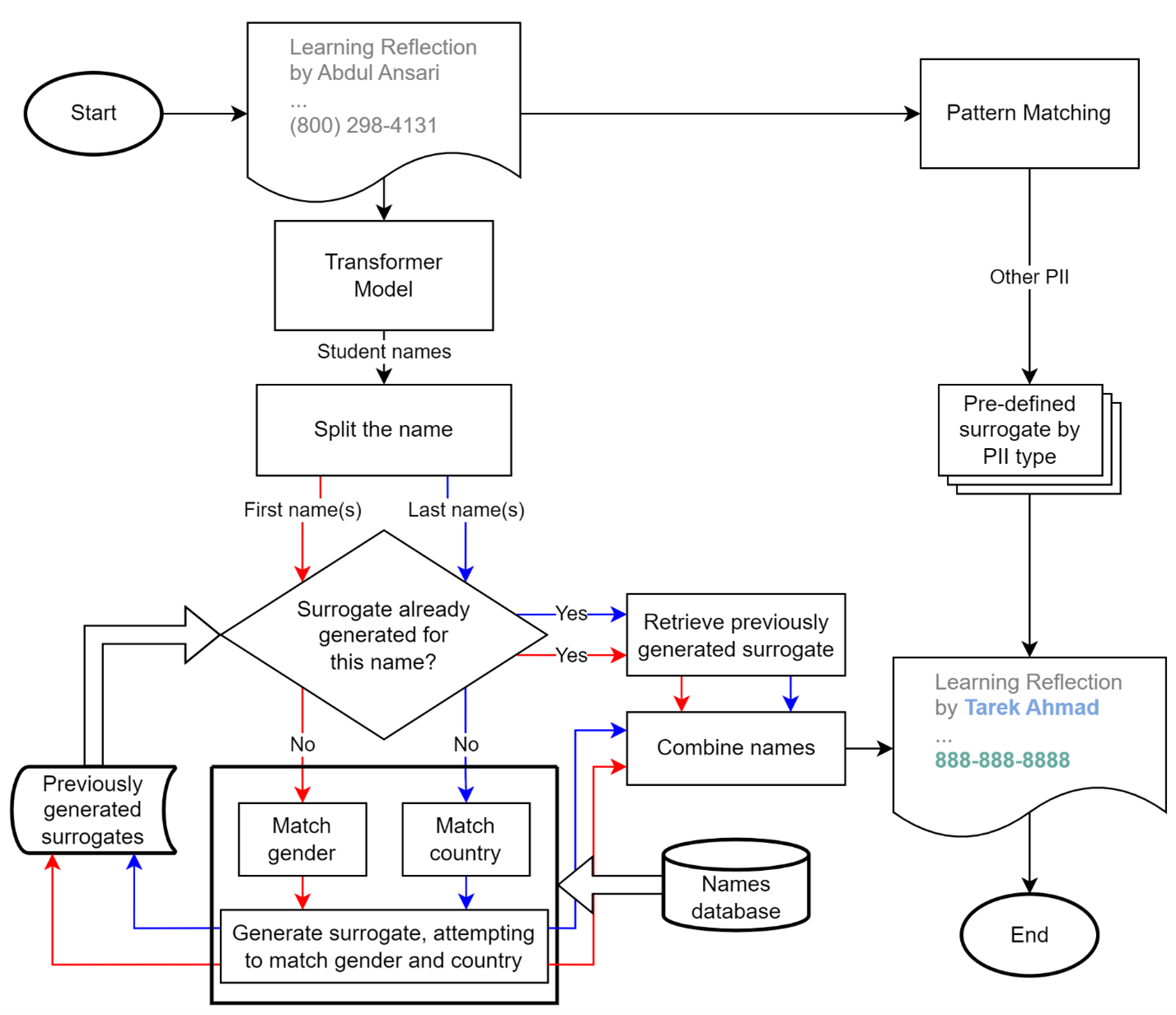
PIILO: an open-source system for personally identifiable information labeling and obfuscation
Information and Learning Sciences
·
18 Oct 2023
·
doi:10.1108/ILS-04-2023-0032

Making sense of L2 written argumentation with keystroke logging
Journal of Writing Research
·
27 Aug 2023
·
doi:10.17239/jowr-2024.15.03.01

Crowd-Sourcing Human Ratings of Linguistic Production
Cognitive Science Society
·
26 Jul 2023
·
[no id info]

Using Transformer Language Models to Validate Peer-Assigned Essay Scores in Massive Open Online Courses (MOOCs)
LAK23: 13th International Learning Analytics and Knowledge Conference
·
13 Mar 2023
·
doi:10.1145/3576050.3576098

Lexical and phraseological differences between second language written and spoken opinion responses
Frontiers in Psychology
·
01 Mar 2023
·
doi:10.3389/fpsyg.2023.1068685

L2 and L1 semantic context indices as automated measures of lexical sophistication
Language Testing
·
02 Feb 2023
·
doi:10.1177/02655322221147924
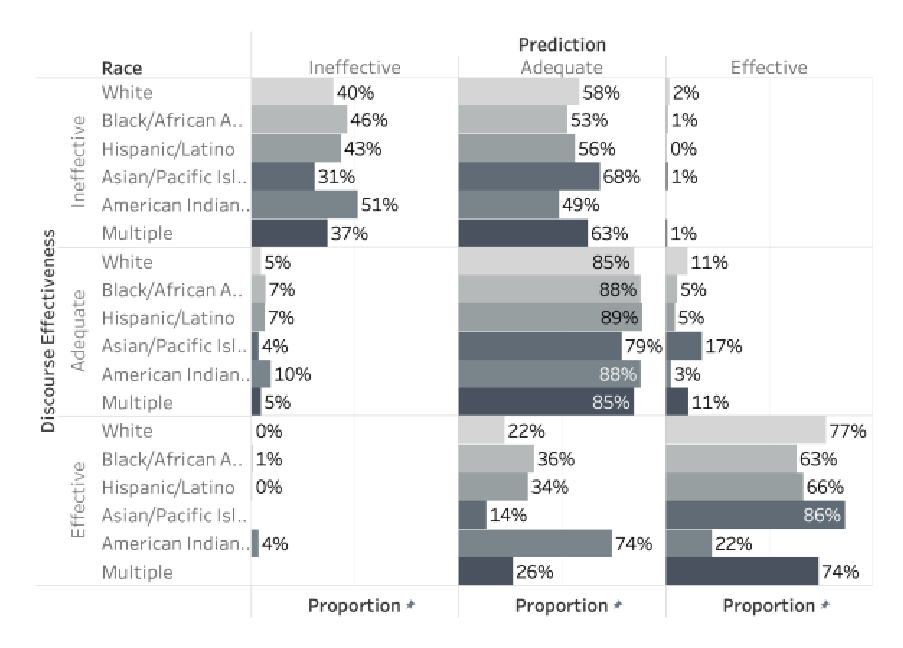
Analyzing Bias in Large Language Model Solutions for Assisted Writing Feedback Tools: Lessons from the Feedback Prize Competition Series
Proceedings of the 18th Workshop on Innovative Use of NLP for Building Educational Applications (BEA 2023)
·
01 Jan 2023
·
doi:10.18653/v1/2023.bea-1.21
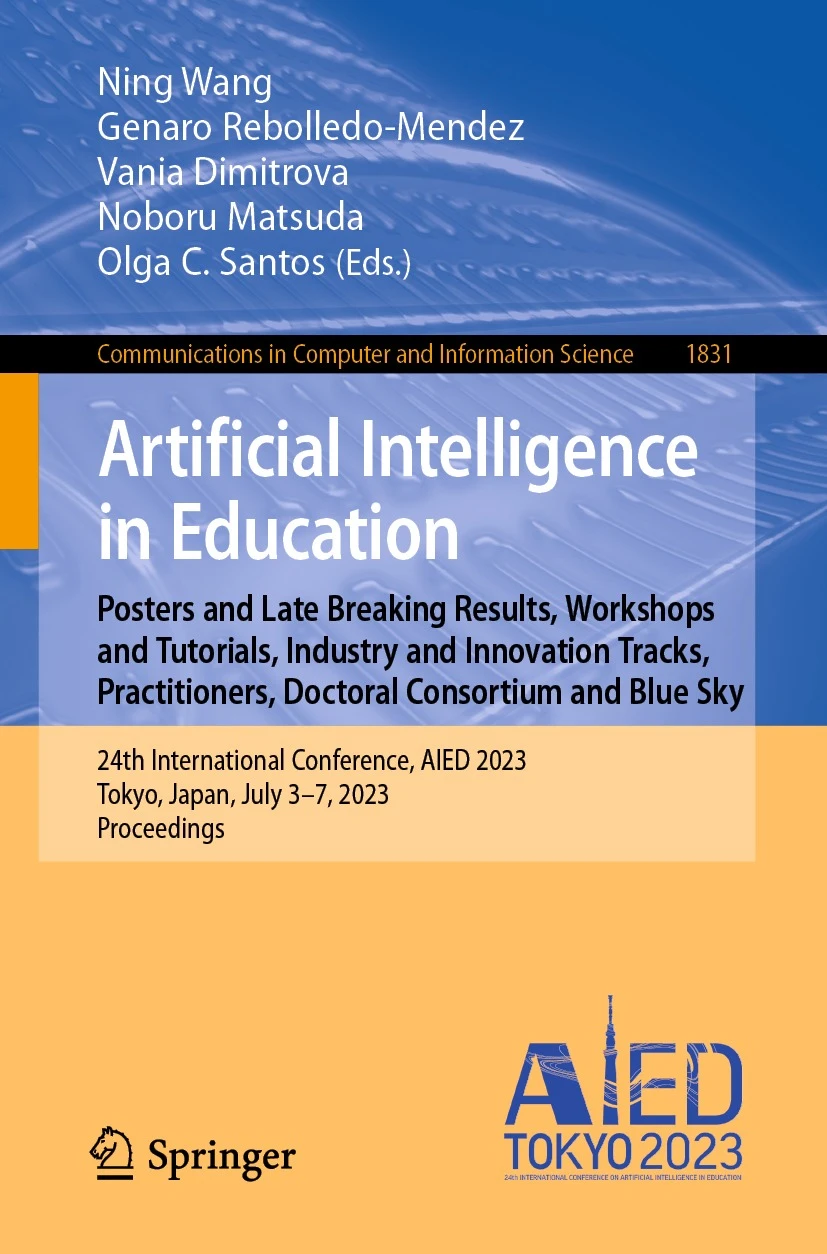
Using Large Language Models to Develop Readability Formulas for Educational Settings
Communications in Computer and Information Science
·
01 Jan 2023
·
doi:10.1007/978-3-031-36336-8_66

Deidentifying Student Writing with Rules and Transformers
Communications in Computer and Information Science
·
01 Jan 2023
·
doi:10.1007/978-3-031-36336-8_109

Using Large Language Models to Provide Formative Feedback in Intelligent Textbooks
Communications in Computer and Information Science
·
01 Jan 2023
·
doi:10.1007/978-3-031-36336-8_75
2022
Stylistic alignment in natural conversation involving second language speakers
Applied Linguistics Review
·
21 Dec 2022
·
doi:10.1515/applirev-2020-0048

The persuasive essays for rating, selecting, and understanding argumentative and discourse elements (PERSUADE) corpus 1.0
Assessing Writing
·
01 Oct 2022
·
doi:10.1016/j.asw.2022.100667
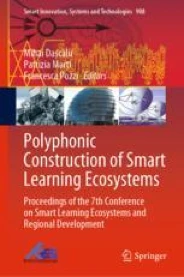
Assessing Readability Formulas in the Wild
Smart Innovation, Systems and Technologies
·
28 Sep 2022
·
doi:10.1007/978-981-19-5240-1_6

Automated Paragraph Detection Using Cohesion Network Analysis
Smart Innovation, Systems and Technologies
·
28 Sep 2022
·
doi:10.1007/978-981-19-5240-1_5

De-Identification of Student Writing in Technologically Mediated Educational Settings
Smart Innovation, Systems and Technologies
·
28 Sep 2022
·
doi:10.1007/978-981-19-5240-1_12

Assessing receptive vocabulary using state‑of‑the‑art natural language processing techniques
Journal of Second Language Studies
·
20 Sep 2022
·
doi:10.1075/jsls.22006.cro

Advances in Readability Research: A New Readability Web App for English
2022 International Conference on Advanced Learning Technologies (ICALT)
·
01 Jul 2022
·
doi:10.1109/ICALT55010.2022.00007

Argumentation features and essay quality: Exploring relationships and incidence counts
Journal of Writing Research
·
01 Jun 2022
·
doi:10.17239/jowr-2022.14.01.01
Toward more effective and equitable learning: Identifying barriers and solutions for the future of online education.
Technology, Mind, and Behavior
·
31 Mar 2022
·
doi:10.1037/tmb0000063

Do Struggling Adult Readers Monitor Their Reading? Understanding the Role of Online and Offline Comprehension Monitoring Processes During Reading
Journal of Learning Disabilities
·
23 Mar 2022
·
doi:10.1177/00222194221081473

A large-scaled corpus for assessing text readability
Behavior Research Methods
·
16 Mar 2022
·
doi:10.3758/s13428-022-01802-x

Age of Exposure 2.0: Estimating word complexity using iterative models of word embeddings
Behavior Research Methods
·
15 Feb 2022
·
doi:10.3758/s13428-022-01797-5

Roles of working memory, syllogistic inferencing ability, and linguistic knowledge on second language listening comprehension for passages of different lengths
Language Testing
·
29 Jan 2022
·
doi:10.1177/02655322211060076

“A fork is a food stabber”: Linguistic creativity in English L1 and L2 speakers
Proceedings of the Annual Meeting of the Cognitive Science Society
·
01 Jan 2022
·
url:https://escholarship.org/uc/item/5fd5r301
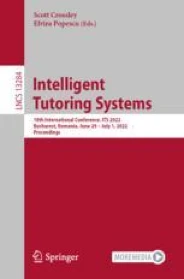
Automated Classification of Argumentative Components in Students’ Essays
Lecture Notes in Computer Science
·
01 Jan 2022
·
doi:10.1007/978-3-031-09680-8_16
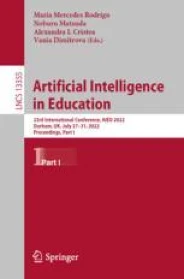
Multitask Summary Scoring with Longformers
Lecture Notes in Computer Science
·
01 Jan 2022
·
doi:10.1007/978-3-031-11644-5_79
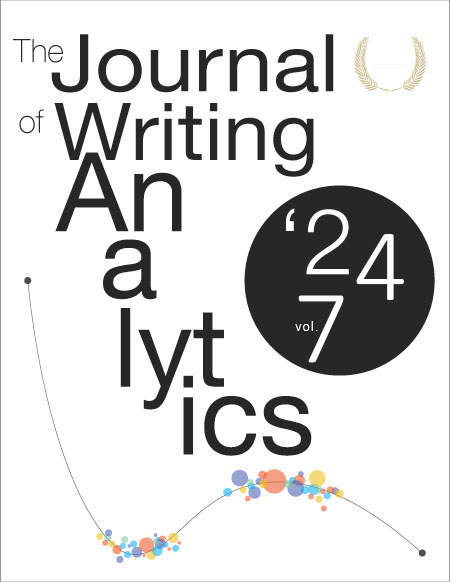
Linguistic Features of Writing Quality and Development: A Longitudinal Approach
The Journal of Writing Analytics
·
01 Jan 2022
·
doi:10.37514/JWA-J.2022.6.1.04
2021

Precision communication: Physicians’ linguistic adaptation to patients’ health literacy
Science Advances
·
17 Dec 2021
·
doi:10.1126/sciadv.abj2836
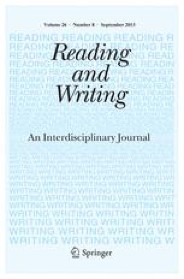
Cohesive devices as an indicator of L2 students' writing fluency
Reading and Writing
·
27 Nov 2021
·
doi:10.1007/s11145-021-10229-3

Source inclusion in synthesis writing: an NLP approach to understanding argumentation, sourcing, and essay quality
Reading and Writing
·
11 Nov 2021
·
doi:10.1007/s11145-021-10221-x

Exploring the relationships among cognitive and linguistic resources, writing processes, and written products in second language writing
Journal of Second Language Writing
·
01 Sep 2021
·
doi:10.1016/j.jslw.2021.100824
Automated Claim Identification Using NLP Features in Student Argumentative Essays
Proceedings of the 14th International Conference on Educational Data Mining (EDM)
·
29 Jun 2021
·
[no id info]
The CommonLit Ease of Readability
Proceedings of the 14th International Conference on Educational Data Mining (EDM)
·
29 Jun 2021
·
[no id info]

Predictors of English as second language learners’ oral proficiency development in a classroom context
International Journal of Applied Linguistics
·
17 May 2021
·
doi:10.1111/ijal.12358

Multilingual Age of Exposure
Lecture Notes in Computer Science
·
01 Jan 2021
·
doi:10.1007/978-3-030-78292-4_7
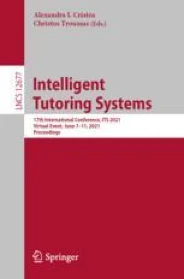
Automated Summary Scoring with ReaderBench
Lecture Notes in Computer Science
·
01 Jan 2021
·
doi:10.1007/978-3-030-80421-3_35

Validity of a Computational Linguistics-Derived Automated Health Literacy Measure Across Race/Ethnicity: Findings from The ECLIPPSE Project
Journal of Health Care for the Poor and Underserved
·
01 Jan 2021
·
doi:10.1353/hpu.2021.0067
2020

Word lists and the role of academic vocabulary use in high stakes speaking assessments
International Journal of Learner Corpus Research
·
10 Dec 2020
·
doi:10.1075/ijlcr.20008.smi

Please, Please, Just Tell Me: The Linguistic Features of Humorous Deception
Dialogue & Discourse
·
09 Dec 2020
·
doi:10.5210/dad.2020.205
Assessing the Validity of Lexical Diversity Indices Using Direct Judgements
Language Assessment Quarterly
·
04 Dec 2020
·
doi:10.1080/15434303.2020.1844205
Second language reading and writing in relation to first language, vocabulary knowledge, and learning backgrounds
International Journal of Bilingual Education and Bilingualism
·
10 Nov 2020
·
doi:10.1080/13670050.2020.1838434

MEASURING LONGITUDINAL WRITING DEVELOPMENT USING INDICES OF SYNTACTIC COMPLEXITY AND SOPHISTICATION
Studies in Second Language Acquisition
·
27 Oct 2020
·
doi:10.1017/S0272263120000546
Predicting the readability of physicians’ secure messages to improve health communication using novel linguistic features: Findings from the ECLIPPSE study
Journal of Communication in Healthcare
·
24 Sep 2020
·
doi:10.1080/17538068.2020.1822726

Employing computational linguistics techniques to identify limited patient health literacy: Findings from the ECLIPPSE study
Health Services Research
·
23 Sep 2020
·
doi:10.1111/1475-6773.13560

Verb argument construction complexity indices and L2 writing quality: Effects of writing tasks and prompts
Journal of Second Language Writing
·
01 Sep 2020
·
doi:10.1016/j.jslw.2020.100730

Claim Detection and Relationship with Writing Quality
Proceedings of the 13th International Conference on Educational Data Mining (EDM)
·
13 Jul 2020
·
[no id info]
Exploring the Construct Validity of the ECCE: Latent Structure of a CEFR-Based High-Intermediate Level English Language Proficiency Test
Language Assessment Quarterly
·
04 Jul 2020
·
doi:10.1080/15434303.2020.1775234

Predicting Math Identity Through Language and Click-Stream Patterns in a Blended Learning Mathematics Program for Elementary Students
Journal of Learning Analytics
·
29 Mar 2020
·
doi:10.18608/jla.2020.71.3

Developing and Testing Automatic Models of Patient Communicative Health Literacy Using Linguistic Features: Findings from the ECLIPPSE study
Health Communication
·
02 Mar 2020
·
doi:10.1080/10410236.2020.1731781

Linguistic features in writing quality and development: An overview
Journal of Writing Research
·
01 Feb 2020
·
doi:10.17239/jowr-2020.11.03.01

Relationships Between Math Performance and Human Judgments of Motivational Constructs in an Online Math Tutoring System
Lecture Notes in Computer Science
·
01 Jan 2020
·
doi:10.1007/978-3-030-52240-7_60

Affective Sequences and Student Actions Within Reasoning Mind
Lecture Notes in Computer Science
·
01 Jan 2020
·
doi:10.1007/978-3-030-52237-7_35

Sequence-to-Sequence Models for Automated Text Simplification
Lecture Notes in Computer Science
·
01 Jan 2020
·
doi:10.1007/978-3-030-52240-7_6
2019
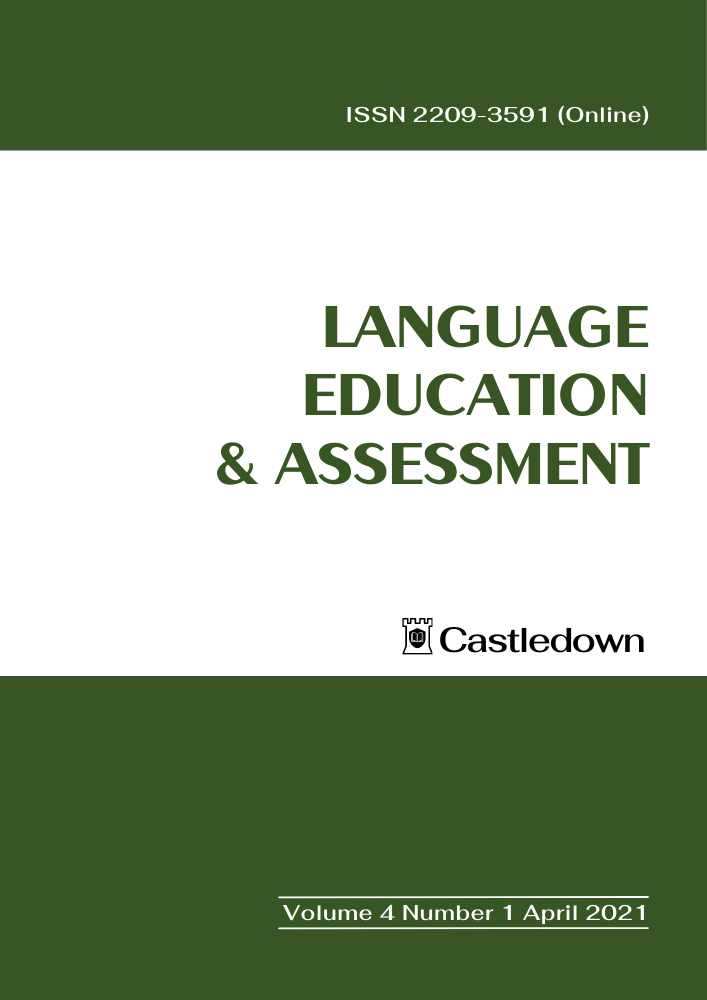
The effect of cohesive features in integrated and independent L2 writing quality and text classification
Language Education & Assessment
·
31 Dec 2019
·
doi:10.29140/lea.v2n3.151

Predictors of second language English lexical recognition
The Mental Lexicon
·
31 Dec 2019
·
doi:10.1075/ml.19028.ska

Using human judgments to examine the validity of automated grammar, syntax, and mechanical errors in writing
Journal of Writing Research
·
01 Oct 2019
·
doi:10.17239/jowr-2019.11.02.01

Moving beyond classic readability formulas: new methods and new models
Journal of Research in Reading
·
13 Sep 2019
·
doi:10.1111/1467-9817.12283

Secure Messaging with Physicians by Proxies for Patients with Diabetes: Findings from the ECLIPPSE Study
Journal of General Internal Medicine
·
19 Aug 2019
·
doi:10.1007/s11606-019-05259-1
Measuring creative ability in spoken bilingual text: The role of language proficiency and linguistic features
Proceeding of the 41st Annual Meeting of the Cognitive Science Society
·
27 Jul 2019
·
[no id info]

Longitudinal Analysis and Visualization of Participation in Online Courses Powered by Cohesion Network Analysis
A Wide Lens: Combining Embodied, Enactive, Extended, and Embedded Learning in Collaborative Settings, 13th International Conference on Computer Supported Collaborative Learning (CSCL) 2019, Volume 2 (pp. 640-643)
·
21 Jun 2019
·
[no id info]

USING LEXICAL FEATURES TO INVESTIGATE SECOND LANGUAGE LEXICAL DECISION PERFORMANCE
Studies in Second Language Acquisition
·
29 Apr 2019
·
doi:10.1017/S0272263119000019

Predicting Second Language Writing Proficiency in Learner Texts Using Computational Tools
The Journal of AsiaTEFL
·
31 Mar 2019
·
doi:10.18823/asiatefl.2019.16.1.3.37
Text Integration and Speaking Proficiency: Linguistic, Individual Differences, and Strategy Use Considerations
Language Assessment Quarterly
·
15 Mar 2019
·
doi:10.1080/15434303.2019.1628239

Using natural language processing and machine learning to classify health literacy from secure messages: The ECLIPPSE study
PLOS ONE
·
22 Feb 2019
·
doi:10.1371/journal.pone.0212488

N-gram measures and L2 writing proficiency
System
·
01 Feb 2019
·
doi:10.1016/j.system.2018.12.001

ABSOLUTE FREQUENCY EFFECTS IN SECOND LANGUAGE LEXICAL ACQUISITION
Studies in Second Language Acquisition
·
31 Jan 2019
·
doi:10.1017/S0272263118000268

Automated Summarization Evaluation (ASE) Using Natural Language Processing Tools
Lecture Notes in Computer Science
·
01 Jan 2019
·
doi:10.1007/978-3-030-23204-7_8

Predicting Math Success in an Online Tutoring System Using Language Data and Click-Stream Variables: A Longitudinal Analysis
Schloss Dagstuhl – Leibniz-Zentrum für Informatik
·
01 Jan 2019
·
doi:10.4230/OASIcs.LDK.2019.25
2018

In Search of New Benchmarks: Using L2 Lexical Frequency and Contextual Diversity Indices to Assess Second Language Writing
Applied Linguistics
·
24 Dec 2018
·
doi:10.1093/applin/amy056

The Tool for the Automatic Analysis of Cohesion 2.0: Integrating semantic similarity and text overlap
Behavior Research Methods
·
08 Oct 2018
·
doi:10.3758/s13428-018-1142-4

Learning linkages: Integrating data streams of multiple modalities and timescales
Journal of Computer Assisted Learning
·
04 Oct 2018
·
doi:10.1111/jcal.12315

Assessing writing with the tool for the automatic analysis of lexical sophistication (TAALES)
Assessing Writing
·
01 Oct 2018
·
doi:10.1016/j.asw.2018.06.004

Technological disruption in foreign language teaching: The rise of simultaneous machine translation
Language Teaching
·
13 Sep 2018
·
doi:10.1017/S0261444818000253
Modeling Math Identity and Math Success through Sentiment Analysis and Linguistic Feature
Proceedings of the 10th International Conference on Educational Data Mining (EDM)
·
20 Jul 2018
·
[no id info]
How Many Words Needed? Using Natural Language Processing Tools in Educational Data Mining
Proceedings of the 10th International Conference on Educational Data Mining (EDM)
·
20 Jul 2018
·
[no id info]

A Latent Curve Model Approach To Studying L2 N‐Gram Development
The Modern Language Journal
·
12 Jul 2018
·
doi:10.1111/modl.12494

Modeling second language writing quality: A structural equation investigation of lexical, syntactic, and cohesive features in source-based and independent writing
Assessing Writing
·
01 Jul 2018
·
doi:10.1016/j.asw.2018.03.002
Beginning and intermediate L2 writer’s use of N-grams: an association measures study
International Review of Applied Linguistics in Language Teaching
·
22 Jun 2018
·
doi:10.1515/iral-2017-0089
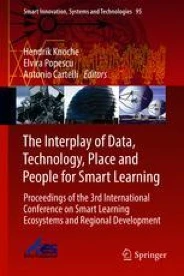
ReadME – Generating Personalized Feedback for Essay Writing Using the ReaderBench Framework
Smart Innovation, Systems and Technologies
·
19 May 2018
·
doi:10.1007/978-3-319-92022-1_12

Studying MOOC completion at scale using the MOOC replication framework
Proceedings of the 8th International Conference on Learning Analytics and Knowledge
·
07 Mar 2018
·
doi:10.1145/3170358.3170369

Effects of lexical features, textual properties, and individual differences on word processing times during second language reading comprehension
Reading and Writing
·
23 Feb 2018
·
doi:10.1007/s11145-018-9833-x

The action dynamics of native and non-native speakers of English in processing active and passive sentences
Linguistic Approaches to Bilingualism
·
22 Feb 2018
·
doi:10.1075/lab.17028.cro

Measuring Syntactic Complexity in L2 Writing Using Fine‐Grained Clausal and Phrasal Indices
The Modern Language Journal
·
16 Feb 2018
·
doi:10.1111/modl.12468
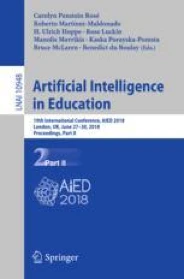
Modeling Math Success Using Cohesion Network Analysis
Lecture Notes in Computer Science
·
01 Jan 2018
·
doi:10.1007/978-3-319-93846-2_12
Linguistic Features of Sarcasm and Metaphor Production Quality
Proceedings of the Workshop on Figurative Language Processing
·
01 Jan 2018
·
doi:10.18653/v1/W18-0902

Exploring Online Course Sociograms Using Cohesion Network Analysis
Lecture Notes in Computer Science
·
01 Jan 2018
·
doi:10.1007/978-3-319-93846-2_63

ReadME – Enhancing Automated Writing Evaluation
Lecture Notes in Computer Science
·
01 Jan 2018
·
doi:10.1007/978-3-319-99344-7_28
%20(springernature.com))
Predicting Question Quality Using Recurrent Neural Networks
Lecture Notes in Computer Science
·
01 Jan 2018
·
doi:10.1007/978-3-319-93843-1_36
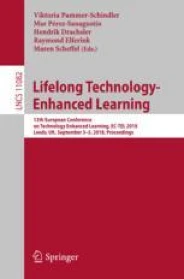
Cohesion-Centered Analysis of Sociograms for Online Communities and Courses Using ReaderBench
Lecture Notes in Computer Science
·
01 Jan 2018
·
doi:10.1007/978-3-319-98572-5_59
2017

Lexical Sophistication as a Multidimensional Phenomenon: Relations to Second Language Lexical Proficiency, Development, and Writing Quality
The Modern Language Journal
·
20 Dec 2017
·
doi:10.1111/modl.12447

Examining lexical development in second language learners: An approximate replication of Salsbury, Crossley & McNamara (2011)
Language Teaching
·
29 Nov 2017
·
doi:10.1017/S0261444817000362
Identifying Creativity During Problem Solving Using Linguistic Features
Creativity Research Journal
·
02 Oct 2017
·
doi:10.1080/10400419.2017.1376490
Examining the Online Processing of Satirical Newspaper Headlines
Discourse Processes
·
21 Sep 2017
·
doi:10.1080/0163853X.2017.1368332

Assessing syntactic sophistication in L2 writing: A usage-based approach
Language Testing
·
19 Sep 2017
·
doi:10.1177/0265532217712554

Making sense of polysemy relations in first and second language speakers of English
International Journal of Bilingualism
·
04 Sep 2017
·
doi:10.1177/1367006917728396
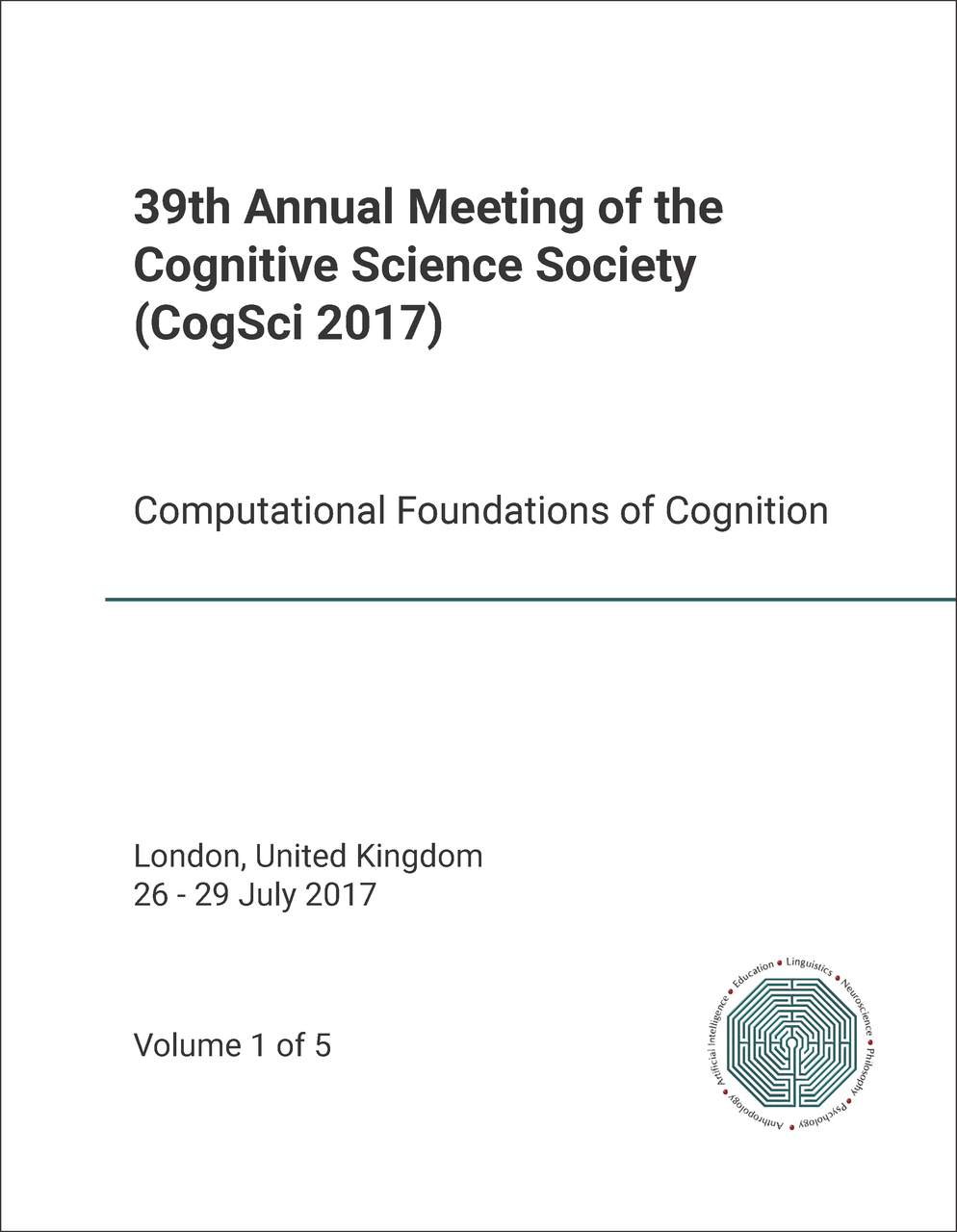
Modeling comprehension processes via automated analyses of dialogism
Proceeding of the 39th Annual Meeting of the Cognitive Science Society
·
29 Jul 2017
·
[no id info]

The tool for the automatic analysis of lexical sophistication (TAALES): version 2.0
Behavior Research Methods
·
11 Jul 2017
·
doi:10.3758/s13428-017-0924-4
Predicting Success in Massive Open Online Courses
Proceeding of the 12th International Conference on Computer Supported Collaborative Learning (CSCL)
·
22 Jun 2017
·
[no id info]

Computational Analysis of Lexical and Cohesion Differences in Deceptive Language: The Role of Accordance
Proceedings of the 30th International Florida Artificial Intelligence Research Society (FLAIRS) Conference
·
24 May 2017
·
[no id info]

How important is size? An Investigation of Corpus Size and Meaning in both Latent Semantic Analysis and Latent Dirichlet Allocation
Proceedings of the 30th International Florida Artificial Intelligence Research Society (FLAIRS) Conference
·
24 May 2017
·
[no id info]
Predicting Text Comprehension, Processing, and Familiarity in Adult Readers: New Approaches to Readability Formulas
Discourse Processes
·
20 Mar 2017
·
doi:10.1080/0163853X.2017.1296264

Predicting math performance using natural language processing tools
Proceedings of the Seventh International Learning Analytics & Knowledge Conference
·
13 Mar 2017
·
doi:10.1145/3027385.3027399

Using Native-Speaker Psycholinguistic Norms to Predict Lexical Proficiency and Development in Second-Language Production
Applied Linguistics
·
13 Mar 2017
·
doi:10.1093/applin/amx005
Linking language to math success in a blended course
Proceedings of the 10th International Conference on Educational Data Mining (EDM)
·
01 Jan 2017
·
[no id info]
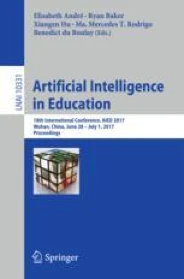
Assessing Question Quality Using NLP
Lecture Notes in Computer Science
·
01 Jan 2017
·
doi:10.1007/978-3-319-61425-0_55
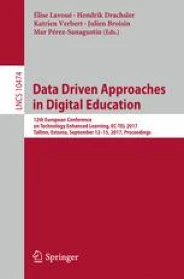
ReaderBench: A Multi-lingual Framework for Analyzing Text Complexity
Lecture Notes in Computer Science
·
01 Jan 2017
·
doi:10.1007/978-3-319-66610-5_48
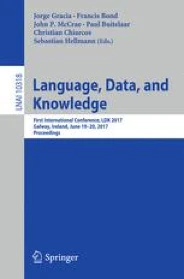
Letting the Genie Out of the Lamp: Using Natural Language Processing Tools to Predict Math Performance
Lecture Notes in Computer Science
·
01 Jan 2017
·
doi:10.1007/978-3-319-59888-8_28
The Next Frontier in Communication and the ECLIPPSE Study: Bridging the Linguistic Divide in Secure Messaging
Journal of Diabetes Research
·
01 Jan 2017
·
doi:10.1155/2017/1348242
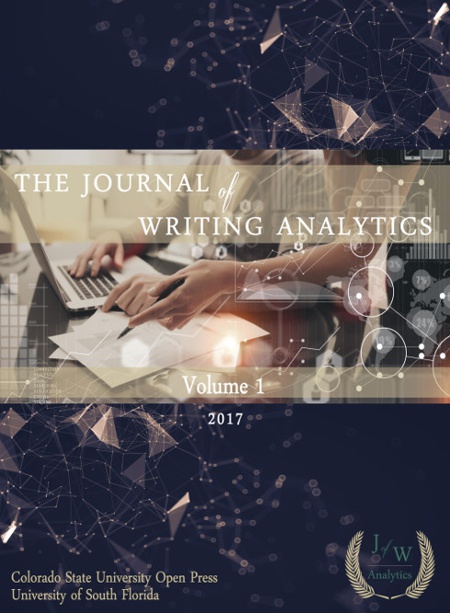
Applying Natural Language Processing Tools to a Student Academic Writing Corpus: How Large are Disciplinary Differences Across Science and Engineering Fields?
The Journal of Writing Analytics
·
01 Jan 2017
·
doi:10.37514/JWA-J.2017.1.1.04
2016

Incorporating Learning Characteristics into Automatic Essay Scoring Models: What Individual Differences and Linguistic Features Tell Us about Writing Quality
Zenodo
·
25 Dec 2016
·
doi:10.5281/zenodo.3554593

The relationship between lexical sophistication and independent and source-based writing
Journal of Second Language Writing
·
01 Dec 2016
·
doi:10.1016/j.jslw.2016.10.003

That noun phrase may be beneficial and this may not be: discourse cohesion in reading and writing
Reading and Writing
·
15 Sep 2016
·
doi:10.1007/s11145-016-9690-4

Extracting Gamers' Opinions from Reviews
2016 18th International Symposium on Symbolic and Numeric Algorithms for Scientific Computing (SYNASC)
·
01 Sep 2016
·
doi:10.1109/SYNASC.2016.044
Document cohesion flow: Striving towards coherence
Proceedings of the 38th Annual Conference of the Cognitive Science Society
·
13 Aug 2016
·
[no id info]

A Usage‐Based Investigation of L2 Lexical Acquisition: The Role of Input and Output
The Modern Language Journal
·
19 Jul 2016
·
doi:10.1111/modl.12344
Automatic Assessment of Constructed Response Data in a Chemistry Tutor
Proceedings of the 9th International Educational Data Mining (EDM)
·
02 Jul 2016
·
[no id info]

Predicting Student Performance and Differences in Learning Styles Based on Textual Complexity Indices Applied on Blog and Microblog Posts: A Preliminary Study
2016 IEEE 16th International Conference on Advanced Learning Technologies (ICALT)
·
01 Jul 2016
·
doi:10.1109/ICALT.2016.104
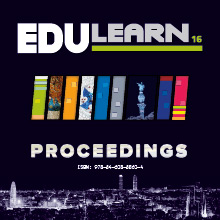
MODELING INDIVIDUAL DIFFERENCES AMONG WRITERS USING READERBENCH
EDULEARN proceedings
·
01 Jul 2016
·
doi:10.21125/edulearn.2016.2241

Idea Generation in Student Writing
Written Communication
·
07 Jun 2016
·
doi:10.1177/0741088316650178

The development and use of cohesive devices in L2 writing and their relations to judgments of essay quality
Journal of Second Language Writing
·
01 Jun 2016
·
doi:10.1016/j.jslw.2016.01.003

Sentiment Analysis and Social Cognition Engine (SEANCE): An automatic tool for sentiment, social cognition, and social-order analysis
Behavior Research Methods
·
18 May 2016
·
doi:10.3758/s13428-016-0743-z

Combining click-stream data with NLP tools to better understand MOOC completion
Proceedings of the Sixth International Conference on Learning Analytics & Knowledge
·
25 Apr 2016
·
doi:10.1145/2883851.2883931

Investigating boredom and engagement during writing using multiple sources of information
Proceedings of the Sixth International Conference on Learning Analytics & Knowledge
·
25 Apr 2016
·
doi:10.1145/2883851.2883939

Linguistic Features of Humor in Academic Writing
Advances in Language and Literary Studies
·
20 Apr 2016
·
doi:10.7575/aiac.alls.v.7n.3p.248
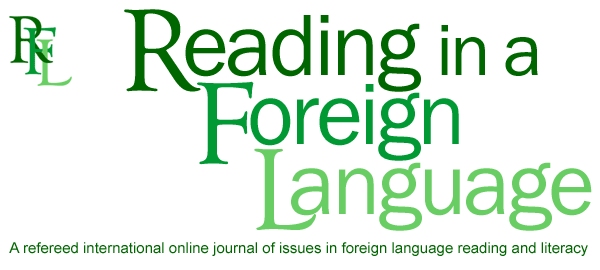
Text-based recall and extra-textual generations resulting from simplified and authentic texts
Reading in a Foreign Language, 28
·
01 Apr 2016
·
[no id info]
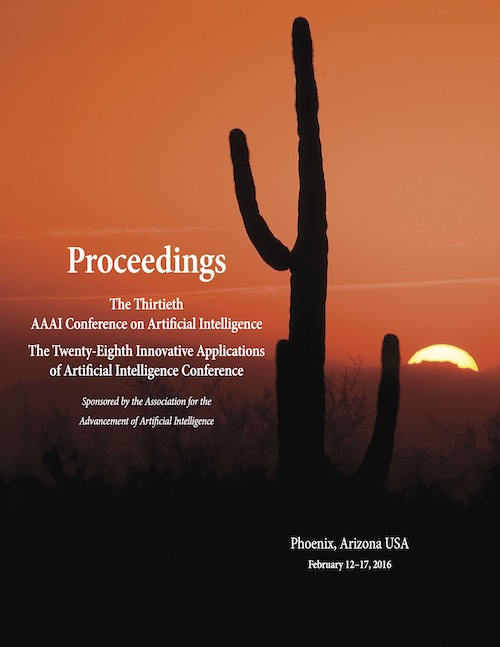
Age of Exposure: A Model of Word Learning
Proceedings of the AAAI Conference on Artificial Intelligence
·
05 Mar 2016
·
doi:10.1609/aaai.v30i1.10372

Accuracy feedback improves word learning from context: evidence from a meaning-generation task
Reading and Writing
·
02 Feb 2016
·
doi:10.1007/s11145-015-9615-7

Say more and be more coherent: How text elaboration and cohesion can increase writing quality
Journal of Writing Research
·
01 Feb 2016
·
doi:10.17239/jowr-2016.07.03.02
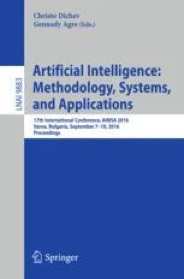
Expressing Sentiments in Game Reviews
Lecture Notes in Computer Science
·
01 Jan 2016
·
doi:10.1007/978-3-319-44748-3_35
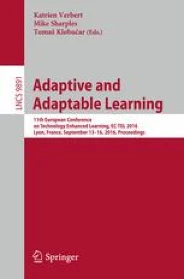
Predicting Academic Performance Based on Students’ Blog and Microblog Posts
Lecture Notes in Computer Science
·
01 Jan 2016
·
doi:10.1007/978-3-319-45153-4_29
2015

The tool for the automatic analysis of text cohesion (TAACO): Automatic assessment of local, global, and text cohesion
Behavior Research Methods
·
28 Sep 2015
·
doi:10.3758/s13428-015-0651-7

Construct validity in TOEFL iBT speaking tasks: Insights from natural language processing
Language Testing
·
19 Jun 2015
·
doi:10.1177/0265532215587391
